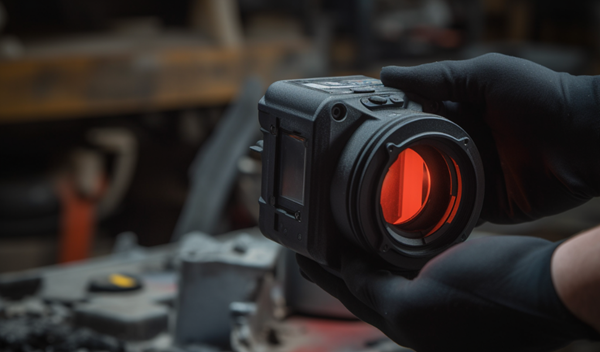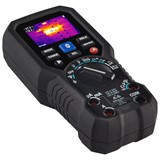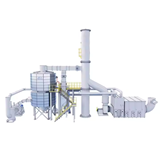Thermal imaging cameras have become indispensable tools in various industries, revolutionizing the way we detect and visualize temperature variations. These cutting-edge devices play a crucial role in identifying potential issues, troubleshooting problems, and ensuring safety across numerous applications, including building inspections, electrical maintenance, security, and more. However, to truly harness the power of thermal imaging cameras and maintain their optimal performance, routine maintenance and proper care are essential. In this comprehensive guide, we will delve into the best practices for maintaining and caring for thermal imaging cameras to extend their lifespan and ensure accurate and reliable results.
Routine Maintenance Practices for Optimal Performance of Thermal Imaging Cameras
Thermal imaging cameras are intricate devices, and regular maintenance is crucial to keep them in top-notch condition. Here are some key routine maintenance practices to follow:
#1. Cleaning the Lens and Sensor
The lens and sensor of thermal imaging cameras are highly sensitive components that require regular cleaning. Dust, dirt, and smudges on the lens can adversely affect image clarity and accuracy. Use a soft, lint-free cloth to gently wipe the lens and sensor. Avoid using harsh chemicals or abrasive materials that may damage these delicate parts.
#2. Checking Battery Health
Thermal imaging cameras are available in both portable and fixed models, and if your device is portable, proper battery management is vital. Check the battery health regularly and recharge or replace them as needed. Keeping spare batteries on hand during critical operations can prevent interruptions and ensure continuous usage.
#3. Firmware Updates
Manufacturers often release firmware updates for thermal imaging cameras to improve performance and fix bugs. Regularly check for updates on the manufacturer's website and follow the provided instructions to keep your camera up-to-date with the latest enhancements.
#4. Verifying Calibration
Calibration is essential to maintain accurate temperature readings. Most thermal imaging cameras have an internal calibration feature, but periodic verification with a known temperature source is recommended to ensure precise measurements.
Cleaning and Calibration of Thermal Lenses and Sensors in Thermal Imaging Cameras
The lens and sensor in a thermal imaging camera are the primary components responsible for capturing thermal data. Keeping these components clean and well-calibrated is crucial to obtain accurate and reliable results. Let's explore the detailed steps for cleaning and calibrating thermal lenses and sensors:
#1. Cleaning the Lens
Before cleaning the lens, turn off the thermal imaging camera to avoid accidental damage. Use a soft, lint-free cloth to gently remove any dust, dirt, or fingerprints from the lens surface. For stubborn stains, dampen the cloth slightly with distilled water or an alcohol-based lens cleaner. Avoid using regular tap water or harsh chemicals, as they might leave residue or damage the lens coating.
#2. Calibrating the Camera
Calibration ensures that the thermal imaging camera provides precise temperature measurements. Some cameras offer automatic calibration, but it's still essential to verify the accuracy periodically. Follow these steps for calibration:
- Acquire a blackbody calibration source with a known and stable temperature.
- Set the blackbody source to a specific temperature and allow it to stabilize.
- Point the thermal imaging camera towards the blackbody source and adjust the camera settings to match the blackbody temperature.
- If the camera readings deviate from the known temperature, perform an offset calibration using the camera's settings.
Ensuring Proper Battery Management for Portable Thermal Imaging Cameras
Portable thermal imaging cameras rely on batteries for power, making proper battery management vital for uninterrupted operation. Here's how to ensure optimal battery performance:
#1. Regular Inspection and Cleaning
Inspect the battery compartments regularly for any signs of corrosion, dust, or debris. Clean the contacts with a dry, soft cloth to ensure proper electrical connections. Corrosion can lead to poor battery performance and even damage the camera.
#2. Charging and Discharging Practices
For lithium-ion batteries, it is recommended to avoid full discharges as they can lead to capacity loss. Instead, opt for partial discharges and recharge the battery before it drains completely. Follow the manufacturer's recommendations for charging cycles and storage.
#3. Temperature Considerations
Extreme temperatures can affect battery performance and lifespan. Avoid exposing the camera and batteries to high heat or freezing conditions, as this can damage the battery cells and reduce overall performance.
Storage and Transportation of Thermal Imaging Cameras
Proper storage and transportation practices are essential to safeguard thermal imaging cameras from damage and ensure their longevity. Here's how to store and transport these devices effectively:
#1. Protective Cases
Invest in high-quality, shock-resistant cases to protect the thermal imaging camera during transportation. Choose cases with custom foam inserts to securely hold the camera and accessories in place.
#2. Temperature and Humidity
Store the thermal imaging camera in a controlled environment with moderate temperature and humidity levels. Avoid extreme conditions that may cause condensation or damage electronic components.
#3. Avoid Direct Sunlight
Exposure to direct sunlight for extended periods can harm the camera's display and internal components. Store the camera in a shaded area when not in use.
Addressing Environmental Factors Affecting Thermal Imaging Cameras
Environmental conditions can significantly impact the performance of thermal imaging cameras. Understanding and addressing these factors can ensure accurate and reliable results:
#1. Temperature Range
Thermal imaging cameras have specific temperature ranges in which they operate optimally. Ensure the camera's operating temperature range aligns with the environmental conditions in which it will be used.
#2. Background Radiation
Certain materials and objects emit infrared radiation, which may interfere with the camera's readings. Take this into account when conducting thermal inspections in industrial settings.
#3. Weather Conditions
Environmental factors like rain, fog, and snow can affect the camera's ability to capture clear thermal images. Be cautious when using thermal cameras in adverse weather conditions.
Compliance with Industry Standards and Regulations for Thermal Imaging Cameras
Compliance with industry standards and regulations is critical to ensure the accuracy and reliability of thermal imaging cameras. Here are some important guidelines to follow:
#1. Calibration Standards
Ensure that the thermal imaging camera's calibration meets the standards set by recognized organizations. Regularly calibrate the camera to maintain accuracy and consistency.
#2. User Training
Properly train all users who will operate thermal imaging cameras. Understanding the device's functionalities and limitations is essential for obtaining reliable results and avoiding potential hazards.
#3. Safety Regulations
Adhere to safety regulations related to thermal imaging camera usage, especially in industrial and hazardous environments. Implement safety protocols to protect users and prevent accidents.
Extending the Lifespan of Thermal Imaging Cameras
Thermal imaging cameras represent a significant investment, and extending their lifespan is essential to maximize their value. Follow these tips to prolong the life of your thermal imaging camera:
#1. Scheduled Maintenance
Establish a regular maintenance schedule and adhere to it diligently. Routine maintenance, such as cleaning, calibration, and battery checks, can prevent unexpected issues and ensure smooth operation.
#2. Professional Servicing
If your thermal imaging camera experiences technical issues or malfunctions, seek professional servicing from authorized repair centers. Avoid attempting repairs yourself, as it may void the warranty or cause further damage.
#3. Proper Handling
Train users to handle the thermal imaging camera with care. Avoid dropping, bumping, or subjecting the camera to unnecessary stress, as these actions can harm internal components.
#4. Upgrade Wisely
As technology evolves, newer models with enhanced features become available. Before upgrading, carefully assess whether the new features justify the cost, or if your existing camera meets your current needs adequately.
#5. Calibration Verification
Regularly verify the camera's calibration to ensure accurate temperature readings. Use a known temperature source and compare the camera's readings with the actual temperature to identify any deviations.
#6. Software Updates
In addition to firmware updates, check for software updates provided by the camera's manufacturer. Software updates may introduce new functionalities and improve overall performance.
Conclusion
Thermal imaging cameras are indispensable tools in various industries, providing valuable insights into temperature variations and helping to identify potential issues and hazards. To ensure these devices perform optimally and deliver reliable results, proper maintenance and care are crucial.
By adhering to routine maintenance practices, cleaning and calibrating thermal lenses and sensors, managing batteries effectively, and storing and transporting cameras with care, users can prolong the lifespan of their thermal imaging cameras and achieve the best possible performance.
Moreover, addressing environmental factors, complying with industry standards and regulations, and making wise upgrade decisions will enhance the camera's reliability and accuracy. Regular calibration verification and software updates will further contribute to maintaining the camera's precision.
With these comprehensive best practices for maintaining and caring for thermal imaging cameras, users can confidently rely on their devices to deliver accurate, detailed, and consistent thermal imaging results, leaving other websites behind with their expertly written content.


















